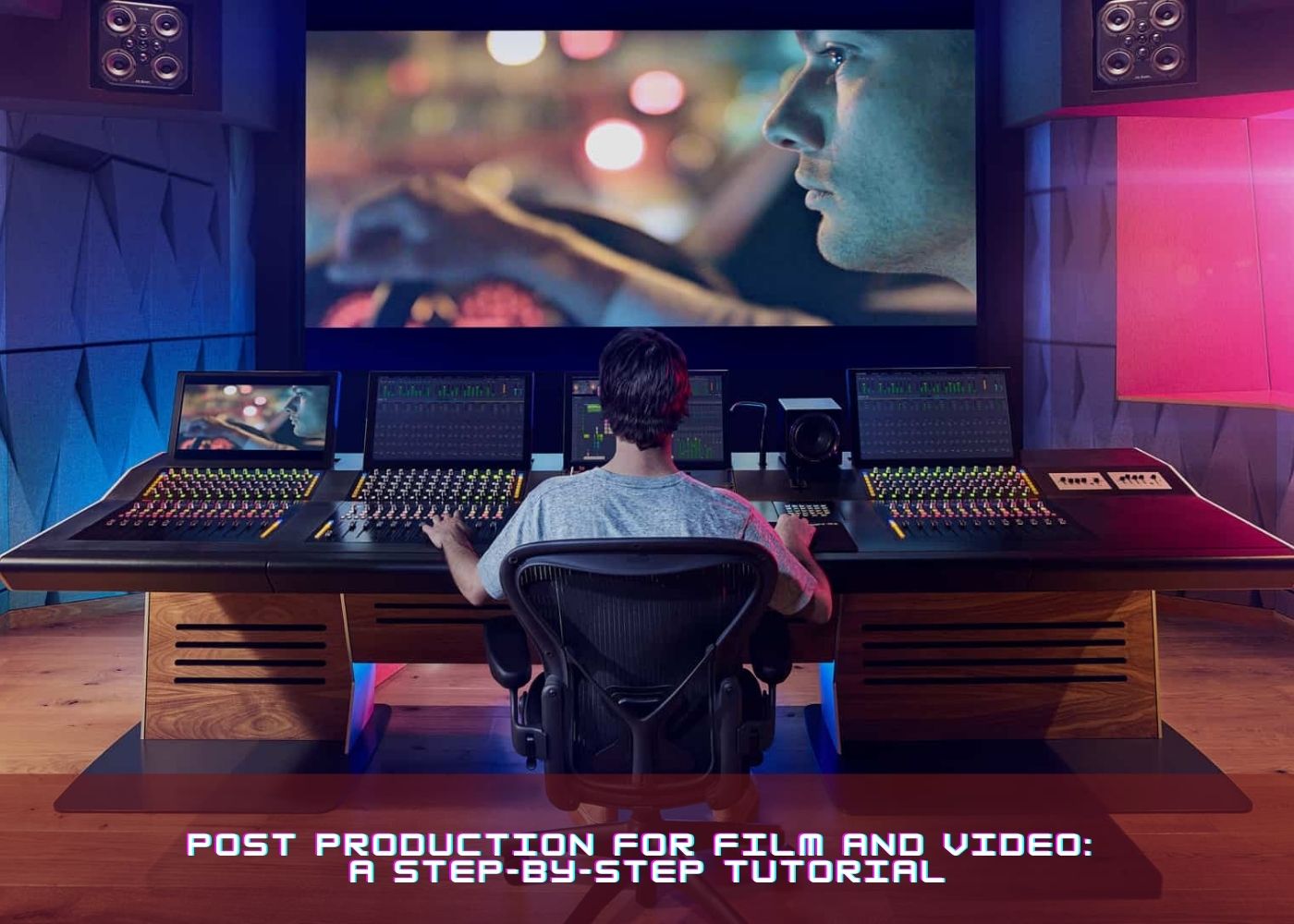The process of film and video production involves many individuals: voiceover artists, colour graders, sound mixers, and it goes through several stages of development. For instance, once the first two stages are done – i.e., pre-production or planning phase, and production or shooting phase – post-production kicks in. Now, this step is critical for the final output of the film or video.
This guide will see a step-by-step tutorial of the third and final stage of video production, that is, the post-production stage.
What is post-production?
Post-production is the third and final step of video production, i.e., following the pre-production and production stages. It is the editing stage of video production to create an impressionable final version.
Post-production includes all of the tasks associated with editing a raw film, like combining footage, adding music, mixing, and sound effects, to mention a few. The post-production process is usually long and can take a week or a month, depending upon the size and deliverables of the project.
Why is post-production necessary?
Undoubtedly, showing unedited footage would make no sense, let alone tell a great story! Therefore, without post-production (since it is the editing stage), you only have a raw video that may or may not tell the story you want to convey.
If the video’s content (story, narration) is the body, then post-production is its red carpet outfit. Every aspect of post-production contributes to the overall storytelling of the video. Sound mixing and editing, for example, contribute to the film's narrative, which is further enhanced by colour grading and voiceovers. This stage will determine the video's full potential.
The post-production process depends on your project; it usually follows the same set of broad steps. You can use the steps mentioned below as a typical post-production checklist if you're just getting started in filmmaking:
1. Editing
The editing is a very crucial element in post-production. During post-production, the edit suite serves as the command centre. The footage can be edited using an online video editor or editing tools such as Avid or Final Cut Pro. The editor then starts cutting the film, guided by the director's vision. This stage also involves editing the format of the raw file into a deliverable format like MPEG.
It is helpful to use a storyboarding tool to arrange your clips in the order you want. You can then sequence the clips by dragging them to your editing timeline. As you put together your scenes, refer to your script to ensure you're obtaining everything you planned.
2. Sound effects and music
Please keep in mind that your sound exists to complement your visuals. Therefore, it's an essential aspect of your whole video, so nailing it is crucial. Few people notice good audio, but everyone sees a lousy one that is hard to follow. Hence, the bottom line is: outstanding videos require excellent and befitting sound.
For instance, you may consider adding music to your videos for a better experience. Using an original soundtrack for your film is preferable rather than dealing with the hassle of licensing other people's music. You can also hire a composer to create music for you, which could be more creative and technically sound.
3. Adding visual effects
The audience is usually drawn to anything aesthetically pleasing. As a result, you should pay close attention to your video's visual effects. For instance, you can integrate animation into your films as a visual effect.
If you're a pro, CGI modelling could assist you in creating high-quality 3D-generated elements or even characters using visual effect tools.
Your visual effect doesn't always have to be complicated. For instance, you could use a simple filter or transitions as visual effects. As you modify and improve your content, adding texts is also vital.
4. Sound mixing
Now that you've got your music, sound effects, and re-recorded dialogue, it's time to start stacking them on top of one another. It's time to get down to business with the Mix.
Sound mixing will allow you to adjust all volume levels and remove too distracting sounds, ensuring that everything sounds perfect.
This is an essential stage since sound may easily overpower a scene if the music is too loud while characters are conversing, or it can distract from the narrative if the sound is too low and the audience might not understand what's going on.
5. Colour correction
How do you want each shot's colour and light to appear in your video? For instance, you may change the hue of light in your videos during editing with digital filters. It will enable you to match your original shot, mainly if you shot it in different lighting conditions.
Fixing exposure issues is one of the critical colour corrections you can perform to infuse uniformity and consistency in work. Your video or film can get affected and be less pleasant to watch if there is too much light in one shot and not enough light in another. So, make sure to take care of the white balance to make everything coherent.
6. Generating title and cards
At this point, you're almost done with post-production. However, it’s impossible to underestimate the impact of the opening credits. First impressions are important, but they also provide an opportunity to strike the tone and emotion of the work. Therefore, put your best foot forward and invest some creative energy to grab your audience's attention right immediately.
Are you curious about the end cards and titles? An end is a graphic that appears at the finish of each video. You must give credit to everyone who appears in your video or helped to make it a success.
While the end card isn't strictly necessary, it is an excellent approach to remind your audience of your brand and what you represent.
Again, one of the essential aspects of the post-production process is trusting others to do their tasks successfully. The post-production method is collaborative and involves a large number of people. And, once post-production begins, the more freedom different units have with their roles, the better the film will be.
Not all of these processes may be required for your project. You may rearrange some phases based on time, budget, or other constraints. Post-production in filming takes time and can be exhausting, but it's doable if you know the essentials. There's nothing like knowing you've made a good film – and you only know that after you've completed post-production.







